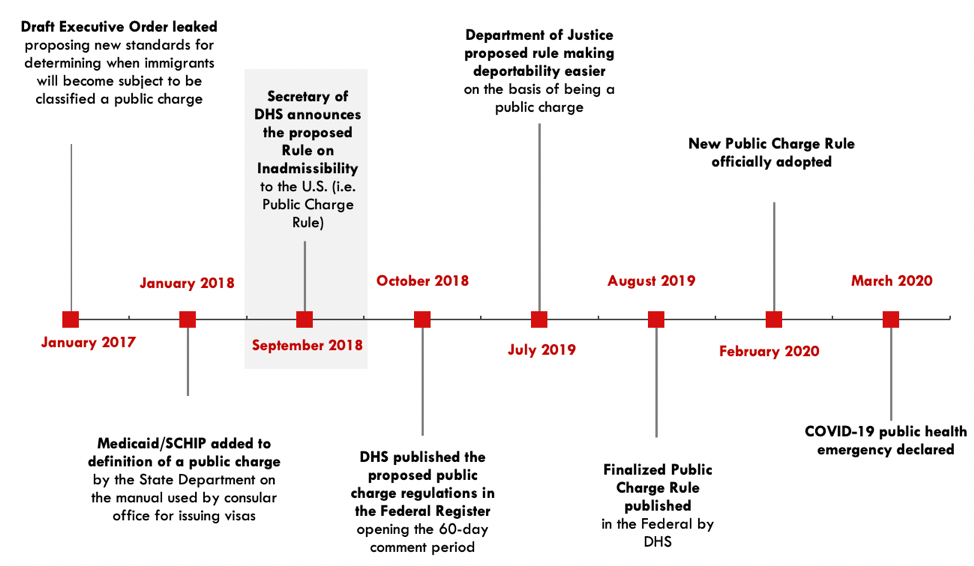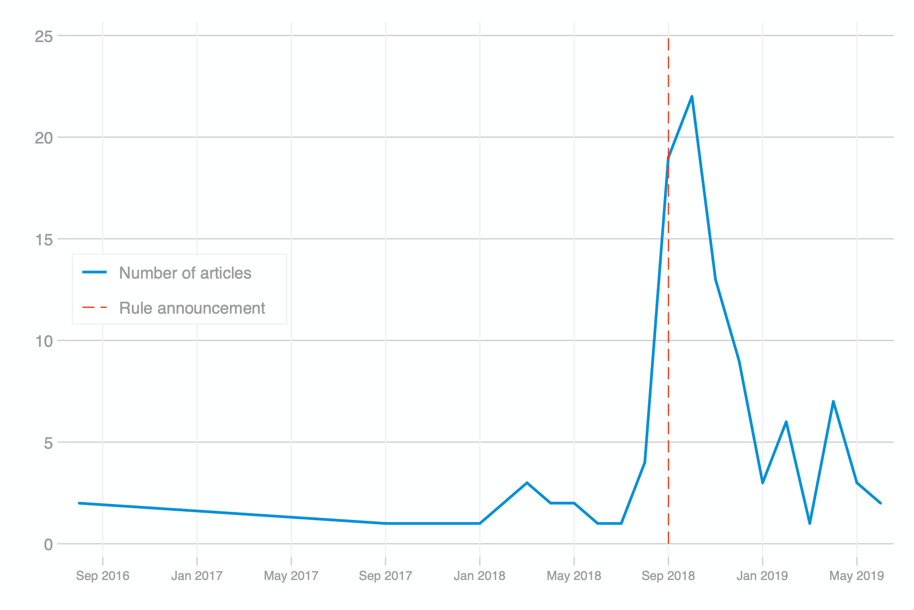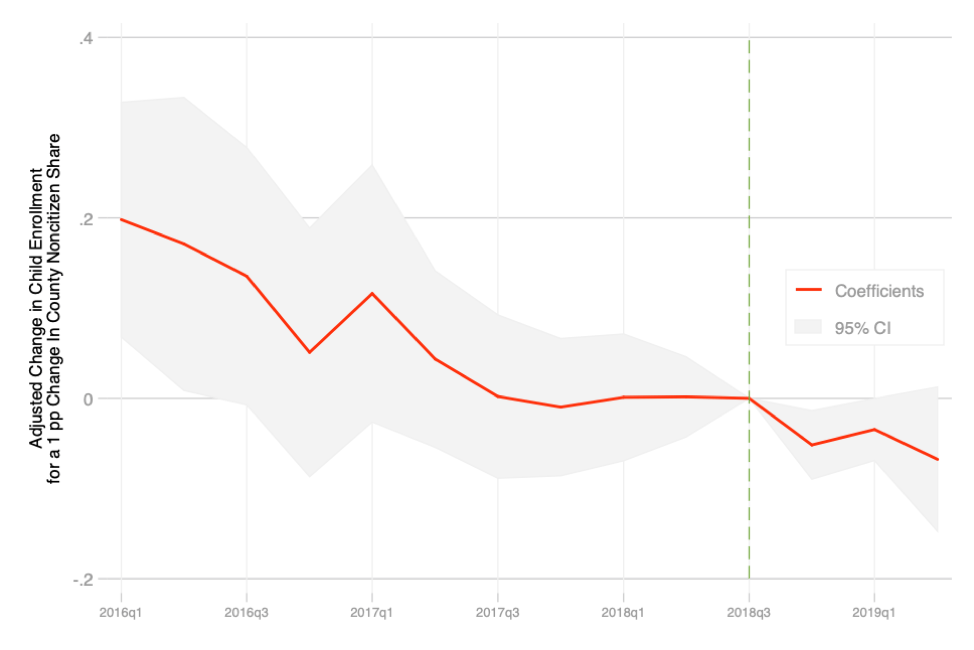On February 24, 2020, the Trump administration’s expanded “public charge” rule took effect. Afterward, the Department of Homeland Security could reject an immigrant’s application for permanent residence for using safety net programs such as Medicaid and the Supplemental Nutrition Assistance Program (SNAP, formerly called food stamps). The rule’s adoption was the culmination of a years-long campaign by the Trump administration to spread fear and misinformation that, ultimately, reduced enrollment in crucial safety-net programs among immigrants and their families. While the rule change went into effect this February, the damage began years earlier. Because food aid reduces child poverty significantly, and child health coverage decreases household medical spending and debt and improves adult health, the consequences will last a lifetime.
Virtually all social scientists predicted that, if adopted, the public charge rule would significantly reduce enrollment in safety net programs for low-income immigrant adults and their families. We investigated whether the mere announcement of the public charge rule change drove families away from critical programs like Medicaid, SNAP, and the Supplemental Nutrition Program for Women, Infants, and Children (WIC). In a new paper in Health Affairs, our team showed that the announcement of the rule in September 2018 stoked enough fear to reduce program enrollment, leading to 260,000 children losing Medicaid coverage. These results also suggest further declines in safety-net use after the rule’s adoption.
That would be devastating in normal times, never mind during a pandemic. Jobs in service industries, which employed individuals most likely to be affected by the public charge rule, have been hit disproportionately hard. The results of our research suggest that at the time when safety-net support is most needed, Trump administration policies have caused many eligible immigrants and their children to avoid the safety-net, cruelly worsening poverty and health.
How did we get here? The Trump administration’s effort to punish immigrants and their families began almost immediately after inauguration. In January 2017, an unsigned executive order was leaked, sparking rumors of a planned public charge rule expansion. We have written about the rule’s winding path from rumors to adoption here and here. Figure 1 provides a timeline.
Our Research
In our new research, we investigated whether the announced public charge rule affected the share of children enrolled in Medicaid, SNAP, and WIC using county-level data from January 2015 to June 2019. We focus on anticipatory effects: the announcement’s impact on child safety-net use before the rule was finalized and adopted. Data on child Medicaid participation was included from California, New Jersey, Tennessee, Texas, and Washington State. Child SNAP enrollment included Texas data and child WIC enrollment used data from Washington and California.
To estimate the causal effect of the proposed rule change, we compared differences in enrollment before and after the September 2018 announcement in counties with varying levels of noncitizen population shares. Our hypothesis was that counties with higher noncitizen population shares would experience larger declines in child safety-net enrollment compared to counties with lower noncitizens shares post-announcement. We estimated effects using difference-in-differences (DID) and event study models.
Results
First, we wanted to verify that the public charge rule announcement coincided with a sharp increase in media coverage that would drive fear and disenrollment. Figure 2 shows the number of news articles per day in four locally focused, US-based Spanish-language newspapers and the website of one major national Spanish language television network from August 2016 to June 2019. Indeed, we observed a large increase in the number of news articles mentioning the term public charge coincident with the September 2018 announcement.
Our main results from the DID models showed that a 1-percentage-point increase in a county’s noncitizen share was associated with a 0.1-percentage-point reduction in child Medicaid use. Applied nationwide, our findings imply that 260,000 more children lost health coverage in high- compared to low-noncitizen share counties. Figure 3 shows the impact of the public charge rule announcement graphically using an event study. We observe a decline in child Medicaid enrollment immediately after the announcement, consistent with our hypothesis that the announcement caused the decrease.
Implications
Put candidly, the administration’s pernicious misinformation campaign has had negative short- and long-term effects on child welfare. We found evidence that child enrollment in WIC declined as well – even though that program was not included in the rule. This implies that fears of safety-net use among immigrants spilled over beyond the programs directly included. Broader offers of help to noncitizens – from local or state authorities – therefore may be jeopardized by the rule as well. This is particularly dangerous when cooperation and trust in government is needed to combat the spread of COVID-19.
Our results mean that by reducing child safety-net enrollment, the public charge rule announcement increased child poverty and ill health at a time when one person’s health affects us all. Our ability to control the current pandemic in this country depends on providing treatment to all residents of the United States.
Beyond the immediate risks posed by ongoing COVID-19 spread, this reduction in enrollment in essential safety-net programs will negatively affect the children of immigrants for the rest of their lives. These outcomes are monstrous – morally, economically, and for the public’s health. The public charge rule change must be reversed, and investments made to reduce fear and restore trust in a government that works for everyone.





